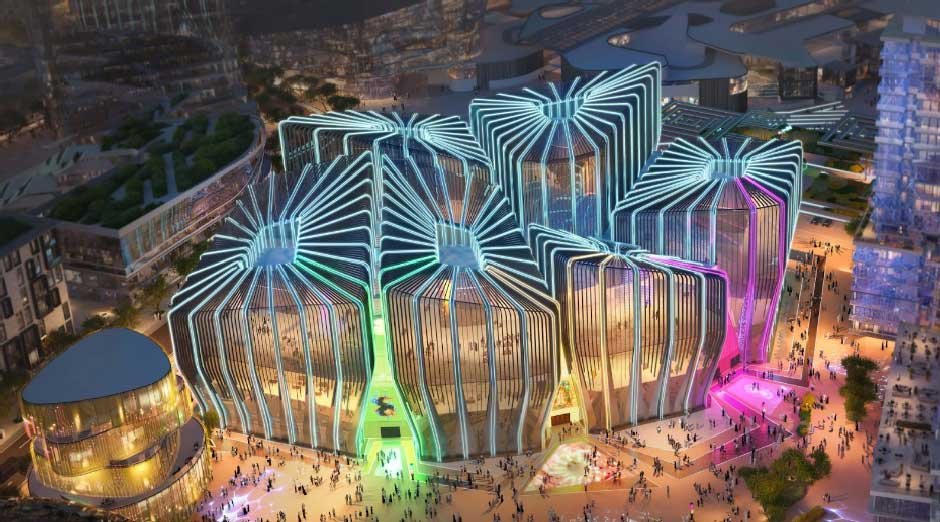If you think of esports as just entertainment, you are wrong. In recent years, it has grown from a niche hobby to a global industry, attracting millions of fans, billions of dollars in investment, and government support. With this development, people have started to realise the cultural and economic value of esports and hosting tournaments and events has become commonplace. However, this requires esports arenas, venues where these events will be held, which represent a new model of entertainment, combining digital innovation with real-world experience. In this article, we will tell you about the importance of esports stadiums and how they are changing the way cities imagine leisure, entertainment and development.
The Rise of Esports Infrastructure in Global Cities
Let’s start our story with the fact that the emergence of specialised esports stadiums marks a turning point in the development of this industry. This has added a new level of perception of esports and its recognition on a par with traditional sports. On platforms such as egw.news, you can read about esports arenas around the world, from the Arlington Stadium in Texas to the Zhongxian Esports Centre in China. These are specially built venues for gaming events that have also become centres of investment and innovation. These stadiums serve not only as competition centres, but also as symbols of a city’s technological progress and its relevance to the interests of young people.
Esports infrastructure is increasingly being integrated into broader urban planning strategies. Some city governments have partnered with technology companies or game publishers to create mixed-use complexes that combine esports arenas with coworking spaces, retail, and digital art installations. These hybrid models reflect the evolving definition of entertainment – where passive observation and active digital interaction coexist in shared spaces.
Economic and Social Impact on Urban Development
Continuing the theme, esports stadiums are catalysts for economic activity. Major tournaments attract not only teams but also fans who buy tickets, book hotel rooms, use transport, and make many other purchases. For cities such as Seoul or Los Angeles, esports events have become as valuable as traditional sports in terms of showmanship and economic development of the region. Medium-sized cities are also starting to invest in smaller arenas to attract year-round programming, from amateur leagues to match-watching parties.
More importantly, esports stadiums also contribute to the social fabric of urban life. Their impact on community building is even mentioned in gaming news, so they also have employment opportunities and often include educational programmes. But these stadiums also host training events in game design, media production, and digital literacy, so they are multifaceted. In fact, esports stadiums are initiatives, entertainment spaces, learning and sports environments at the same time. This reflects a good societal development in the way we value digital culture and esports.

Technological Innovation and the Venue Experience
Unlike traditional sports venues, esports stadiums must be designed around real-time data, high-speed internet infrastructure, and immersive viewing experiences. From massive LED walls to VR-enhanced spectator zones, these venues are laboratories for entertainment tech. High-definition broadcasting, interactive displays, and augmented reality overlays are now considered baseline features.
Some stadiums are experimenting with technology and trying to differentiate themselves from others. Experts often incorporate AI-generated commentary features, which increases feedback for players and spectators. Modern arenas also support blockchain-based ticketing functions. These innovations are aimed at the generation of fans raised on digital technologies and interactive media. By integrating new technologies, esports stadiums are not only promoting the gaming experience, but also the standards for all event and entertainment formats.
In addition, combined formats that combine the physical presence of viewers with online broadcasts and interactive digital arenas are becoming increasingly popular. This approach allows fans from anywhere in the world to join events, communicate with each other and even influence certain elements of the broadcast. Such technologies are not just additional features – they have become key to making the stadium truly modern and attractive.
Challenges and the Future of Multi-Use Entertainment Spaces
Despite their significant potential, esports arenas face a number of challenges. One of the key factors contributing to success is ensuring a stable workload throughout the year. Unlike traditional sports arenas that host football or basketball matches and other sports on a regular basis, esports events are not as frequent and do not always guarantee full occupancy. To optimise the use of space, many arenas are introducing the concept of multifunctionality by organising concerts, tech forums, fan festivals, etc. to generate revenue in between the main events.
Another challenge is to remain relevant with the development of technology. Currently, esports is very popular and has a lot of fans, but will it remain so in the future? Streaming platforms, diverse projects and exciting home environments threaten to distract fans from their physical presence at stadiums. To counteract this, stadiums are focusing on exclusivity – offering unique products only for fans present in the arenas. They can meet their favourite players, get an autograph or a gift, all of which cannot be replicated online.
The future is likely to see more collaboration between cities, game publishers, and private developers to create hybrid entertainment ecosystems. These could take the form of esports districts – entire neighbourhoods based on digital culture, coworking spaces, esports cafes, and training academies. These districts will not only host events, but will also foster ongoing community engagement and urban regeneration, especially in areas that are seeking revitalisation.








